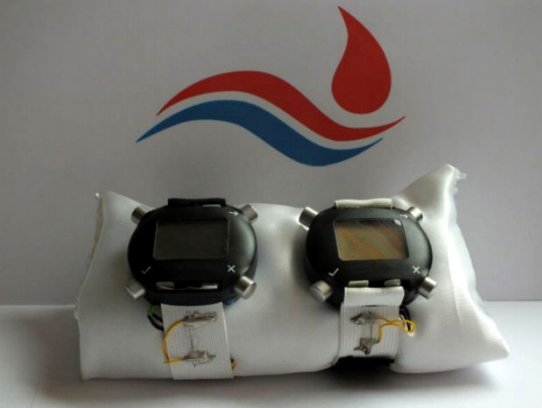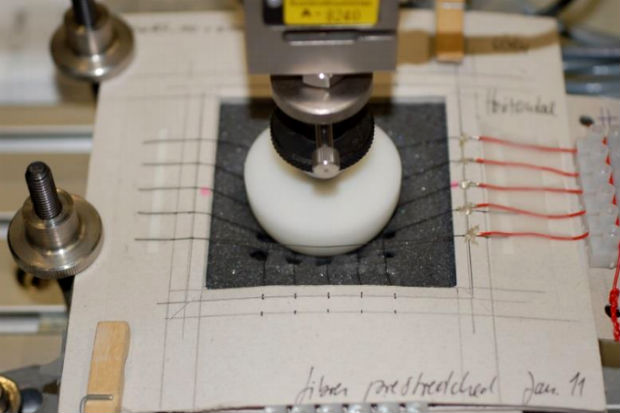
Myant introduces blood pressure monitoring smart shirt
The company STBL Medical Research AG has developed a device that can be worn on the wrist and records the blood pressure continuously. The measurement is carried out by several sensors which simultaneously measure the contact pressure, pulse and blood flow on the surface of the skin in the vicinity of the wrist. The new sensor designed as an alternative to the pressure cuffs and invasive monitoring involving a catheter inserted into the artery, is as big as a wristwatch.

18th June 2013
Innovation in Textiles
|
Dubendorf
The company STBL Medical Research AG has developed a device that can be worn on the wrist and records the blood pressure continuously. The measurement is carried out by several sensors which simultaneously measure the contact pressure, pulse and blood flow on the surface of the skin in the vicinity of the wrist.
The new sensor designed as an alternative to the pressure cuffs and invasive monitoring involving a catheter inserted into the artery, is as big as a wristwatch.
Michael Tschudin, co-founder of STBL, commented: "This measuring device can be used for medical purposes, for example as a precaution for high-risk patients or for treating high blood pressure, but also as a blood pressure and heart rate monitor for leisure activities and sports as well as for monitoring fitness in high-level sports."
One of the challenges for the engineers was the pressure of the device on the skin that changes constantly, meaning that highly sensitive correctional measurements are necessary.
Empa's Laboratory for High Performance Ceramics sought a solution to this problem within the scope of a CTI project. A sensor made from piezo-resistive fibres in the wristband measures the contact pressure of the device on the skin. Changes in signal strength due to slippage or muscle tension could lead to incorrect measurements. It is these changes that the Empa sensor registers – enabling the measurements to be corrected accordingly.

The fibre is electrically conductive, it detects any movement or change in pressure, converts this into an electrical signal and transmits this to the measuring device. This enables the measuring accuracy of the ‘blood pressure watch’ to be increased by more than 70%.
"Four years ago, we produced the first prototype," said Doctor Frank Clemens of Empa's Laboratory for High Performance Ceramics. Since then, relevant tests have confirmed the functionality of the sensors. Empa is now working flat out to integrate the piezo-sensor into the device in a way that is not only more attractive; it should also be easy to install without too much effort. Possible methods include glueing, laminating or weaving it in.
Cardiovascular diseases are the most common cause of death worldwide. Empa decided to address the potential demand for continuous measurement devices, which could provide additional safety margins. Those would enable emergency measures to be taken before something serious happened, due to the system’s ability to record and analyse an increased pressure wave that may be followed by a heart attack of stroke.
According to Professor Thomas Luscher, director of the Clinic for Cardiology at the University Hospital Zurich and co-founder of STBL, explained some of the advantages that constant measurement offers: "It gives us the opportunity to record blood pressure in the patient's natural environment. The patient is not limited in terms of his freedom of movement."
Clinical trials are currently under way. The first measurements have already been taken in parallel with a catheter procedure. The product should initially be supplied in two versions – a medical monitoring device and a ‘slimmed down’ version for leisure use by sportsmen and women and ordinary people.
"The sensor will be cheaper than the existing 24-hour monitoring devices, such as those currently used in hospitals", Tschudin confirmed. Such devices cost up to 6,000 Swiss francs, meanwhile the ‘blood pressure watch’ cost about ten times less.

Business intelligence for the fibre, textiles and apparel industries: technologies, innovations, markets, investments, trade policy, sourcing, strategy...
Find out more